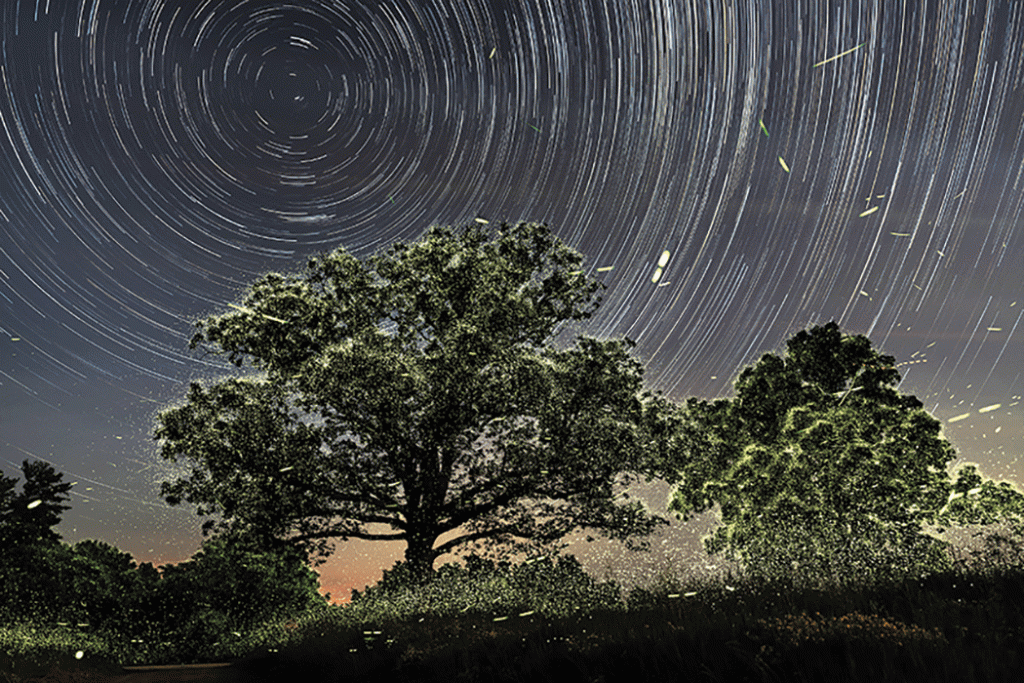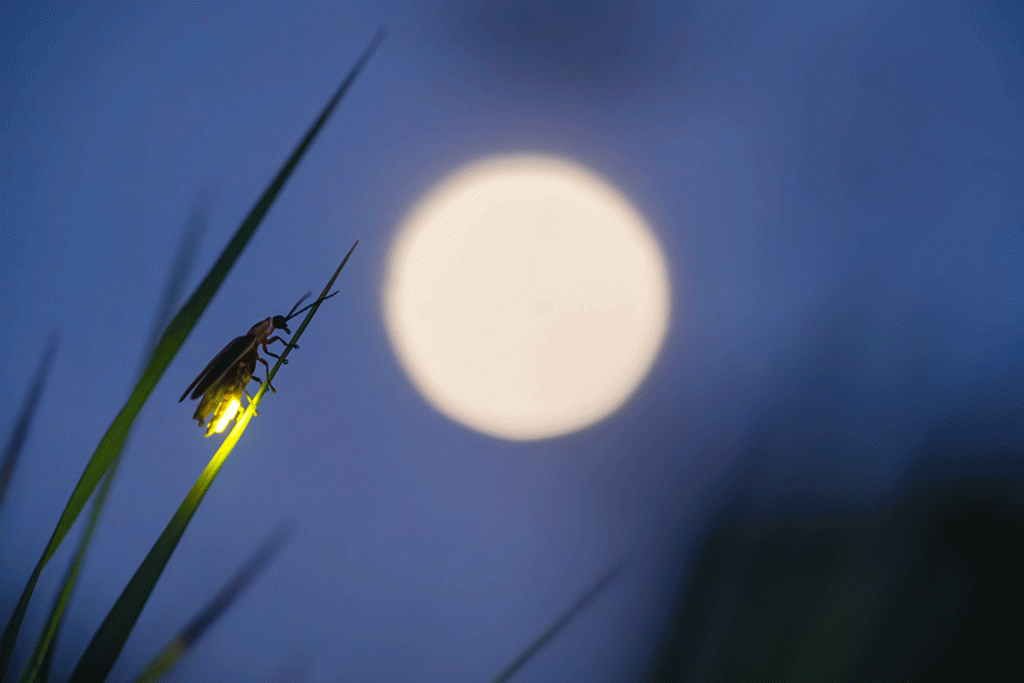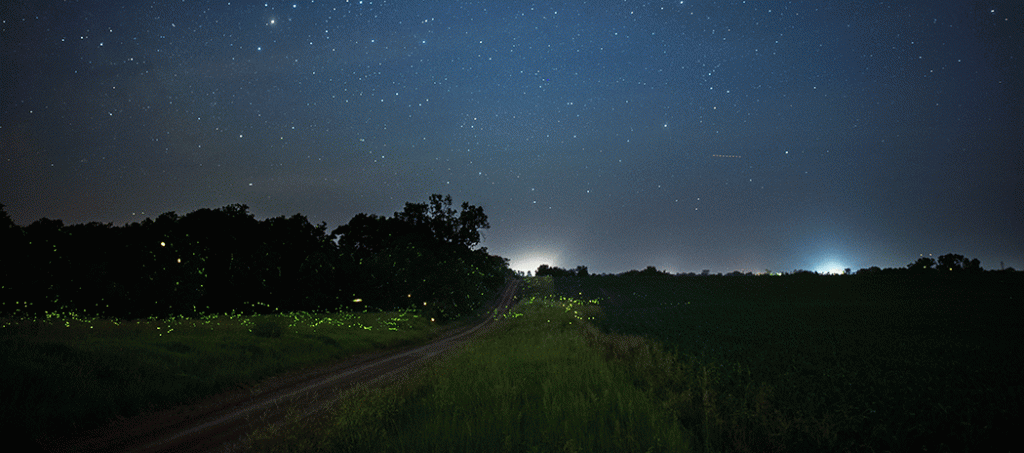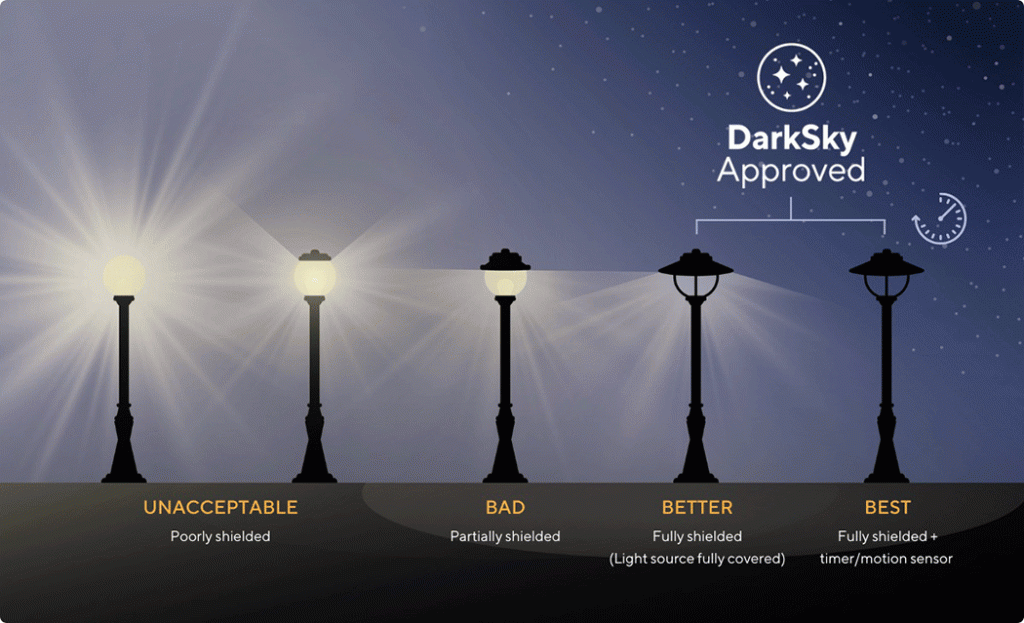
If you’ve noticed more twinkling lights in Iowa over the summer, you’re not alone! Many Iowans have reported an increase in firefly sightings this year compared to the past few. This local surge is a welcome sight, especially given the global decline in firefly populations. The recent increase in precipitation over the last year or two, following a particularly dry period, has likely created ideal conditions for these fascinating insects to thrive.
While some alarming articles suggest that we might be the last generation to witness fireflies, the situation in Iowa isn’t as dire. Although firefly populations in our state have experienced declines over time, we’re not facing their imminent disappearance here. However, other parts of the United States are seeing truly dramatic decreases, with fireflies becoming a rare sight in areas where they once flourished.
As someone who travels the country with a firefly photography exhibit and speaks with thousands of people annually, I frequently hear concerning stories. People in their 50s and 60s often remember catching fireflies in jars in their childhood neighborhoods in southern cities in Florida and Texas. Yet their own children, even teenagers, often tell me they’ve never seen a firefly in their lives. The pervasive use of mosquito control and other pesticides in urban areas of the South has made fireflies incredibly scarce. While these younger generations may still encounter fireflies in more natural settings, seeing them in their own neighborhoods is becoming increasingly unlikely.

Fortunately, Iowa’s outlook is more hopeful. We will most likely continue to enjoy fireflies for generations to come, but their continued presence depends on our actions and willingness to adapt. Pesticides, especially broad-spectrum mosquito spraying, have the most profound impact on firefly populations. However, other factors are also at play. Fireflies are nocturnal creatures that rely on their bioluminescent signals to find mates. Our ever-increasing city lights, streetlights, and residential lighting create significant light pollution. This artificial light can confuse fireflies, making it difficult for them to distinguish a potential mate’s flash. Firefly scientists have documented that certain species are particularly susceptible to light pollution, leading to reduced reproduction rates.
“Light doesn’t only affect fireflies,” says Mary Carter, a local night-sky enthusiast. “Our biological clock is disrupted by artificial lights at night. This affects our sleep-wake pattern and can result in a poor night’s sleep.”

Common agricultural practices also significantly disrupt firefly populations as well. Tilling soil and spraying of pesticides and herbicides harm fireflies at various life stages, while also reducing the biodiversity essential for their food sources.
Furthermore, female fireflies often don’t fly, or fly very short distances. After mating, they typically lay their eggs in the same area where they were born. This makes them exceptionally vulnerable to habitat modification or removal. The expansion of our cities, coupled with the decreasing cost of electricity and lighting, continuously encroaches upon the natural habitats of fireflies and countless other insects and animals. It’s no wonder that several firefly species are now listed as endangered or on the Red List of the International Union for Conservation of Nature (IUCN).
What Can You Do?
Since fireflies spend most of their lives in the larval stage, we can significantly help them by creating better environments, whether in our residential areas or agricultural landscapes.
Reduce or Eliminate Pesticides: Minimize or completely stop the use of pesticides and other chemicals on your property. This is perhaps the most impactful step you can take.

Embrace Dark-Sky Friendly Lighting: Instead of using bright, cool daylight LED outdoor lights, consider replacing them with dimmer, warmer-colored lights that direct their illumination downwards. Reduce or eliminate unnecessary outdoor lighting, or use motion-sensitive lights only when needed. A low-cost option can be adding a bug light, an amber-colored light that does not attract insects, which is a benefit for all bugs, not just fireflies.
Create Firefly-Friendly Habitats: Fireflies thrive in undisturbed natural areas like unplowed and unmowed prairies, meadows, and areas with abundant rotten leaves and wood. These moist environments are crucial for egg-laying and provide a habitat where larvae can find their food, such as small snails or other soft-bodied insects.
Natural habitats not only benefit fireflies but also offer wonderful opportunities for us to enjoy them. It is far more enjoyable to watch or photograph fireflies in great abundance in areas without excessive lights, streets, or development.
How many Iowans remember catching fireflies in jars and enjoying the magic of summer nights? Let’s help fireflies thrive in Iowa so our kids and future generations can enjoy them too.
To see more of Radim Schreiber’s extraordinary firefly photography, visit FireflyExperience.org.
Follow Friends of the Night Sky (Jefferson County) on Facebook.
More About Radim from FireflyExperience.org
I do not manipulate any of the firefly photographs. I use standard photography techniques such as basic contrast or color adjustment. The glow is the same glow as camera captured it. I took all the photos of the fireflies on the website in their natural environment, without flash or any other artificial lighting. I believe that this is the only way to preserve its true luminosity and bioluminescent glow.
The most challenging aspect of firefly photography is the fleeting nature of fireflies. When they glow, they like to fly or move. They never seem to be still for very long, and so I struggle to quickly compose my shots. It was sometimes almost complete darkness and I took the photo right when the firefly illuminated.—and all that when being bitten by other insects. This truly shows my patience 😉
I believe that fireflies open doors to joy, magic and deep connection with nature. It is my mission to use the latest technology to represent fireflies in the best light possible and understand and communicate their message to the world. I believe that fireflies have power to connect with various cultures and bring connection and understanding among them.
